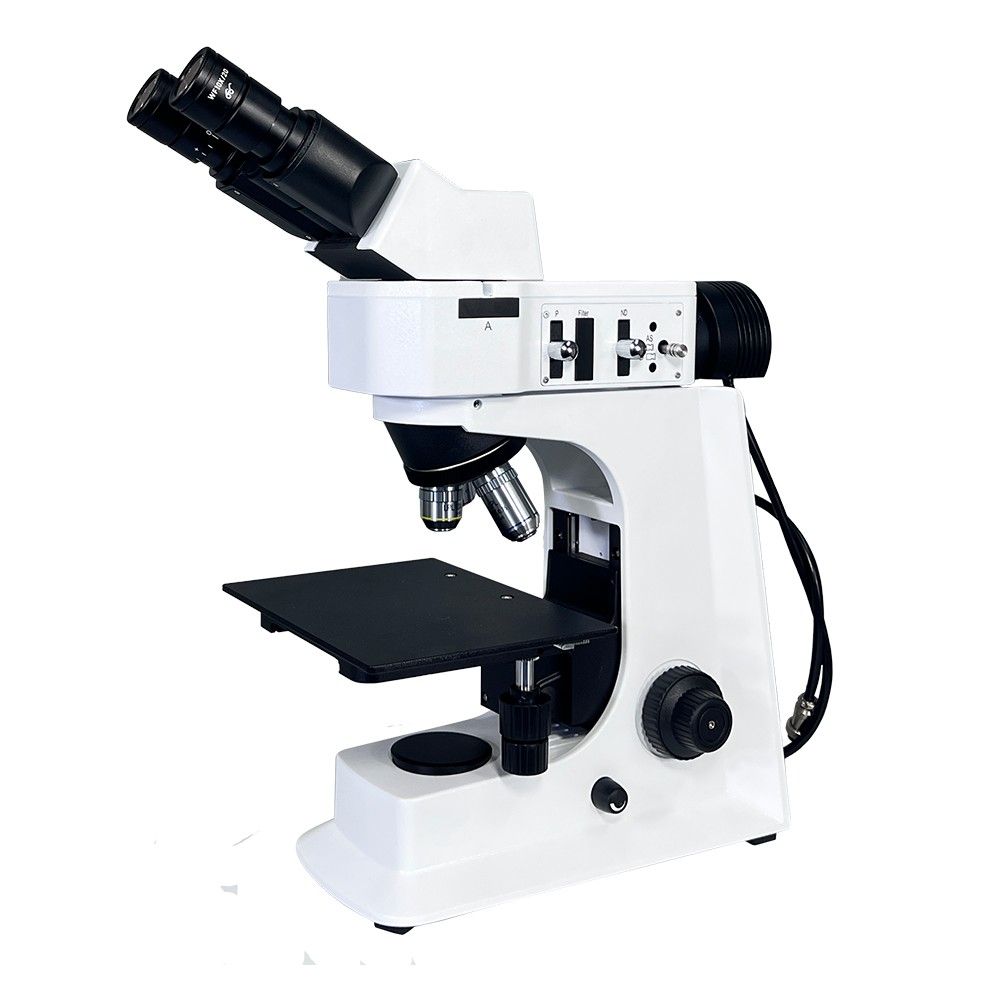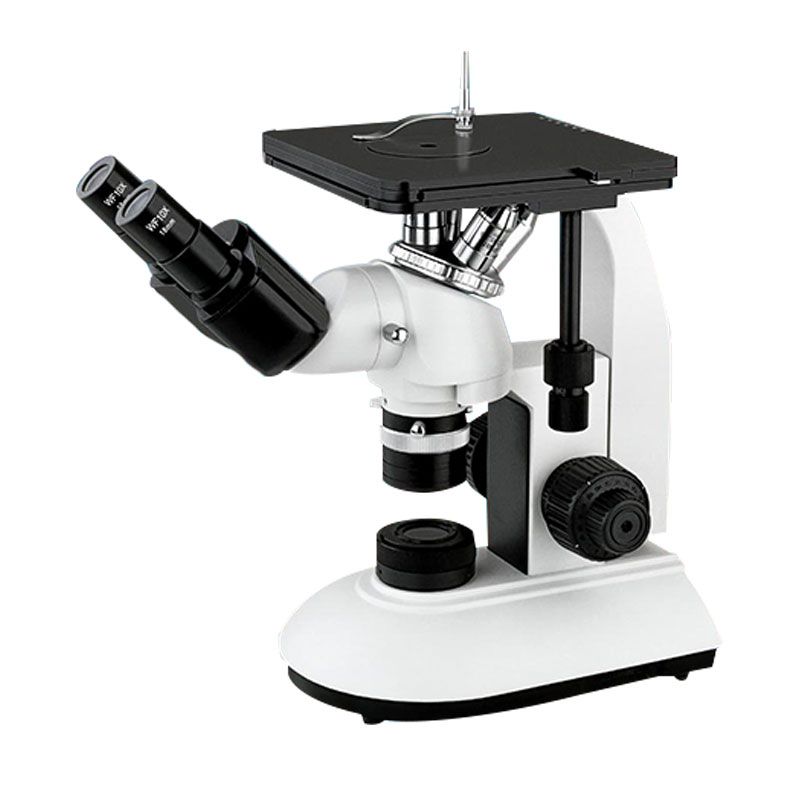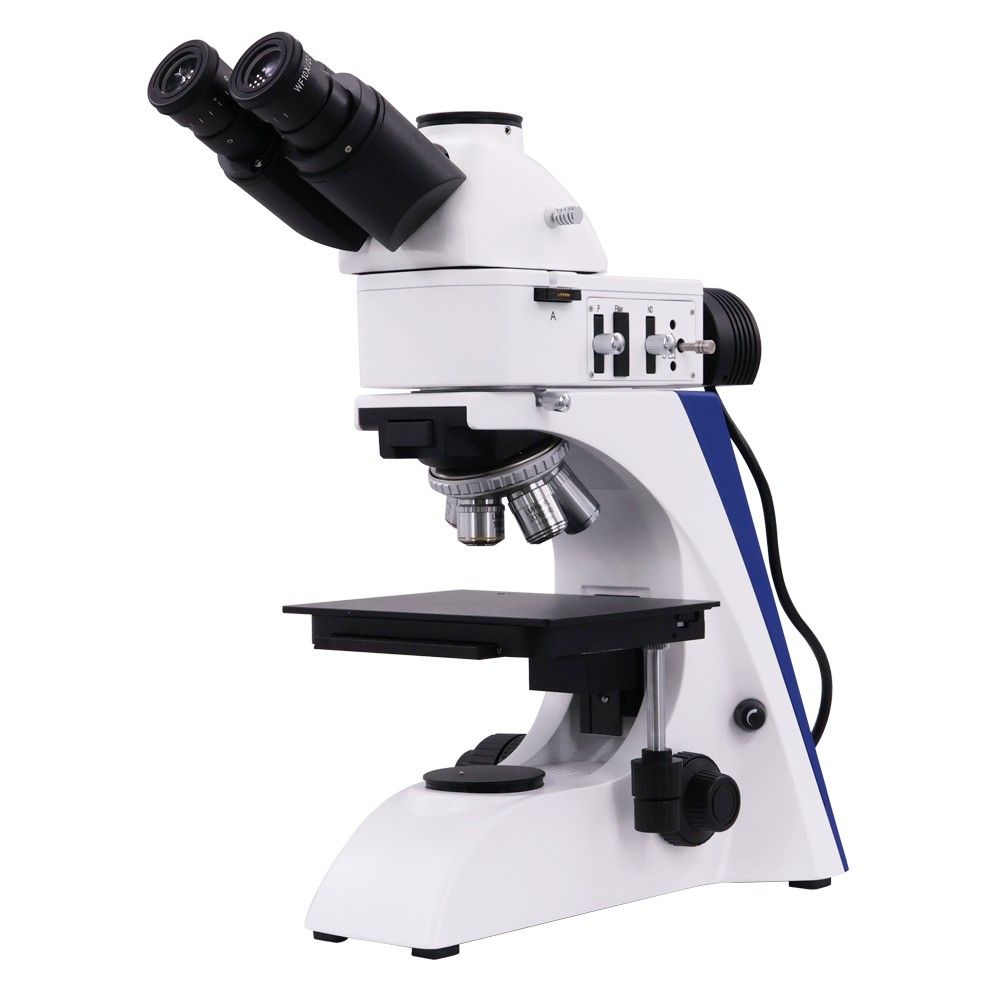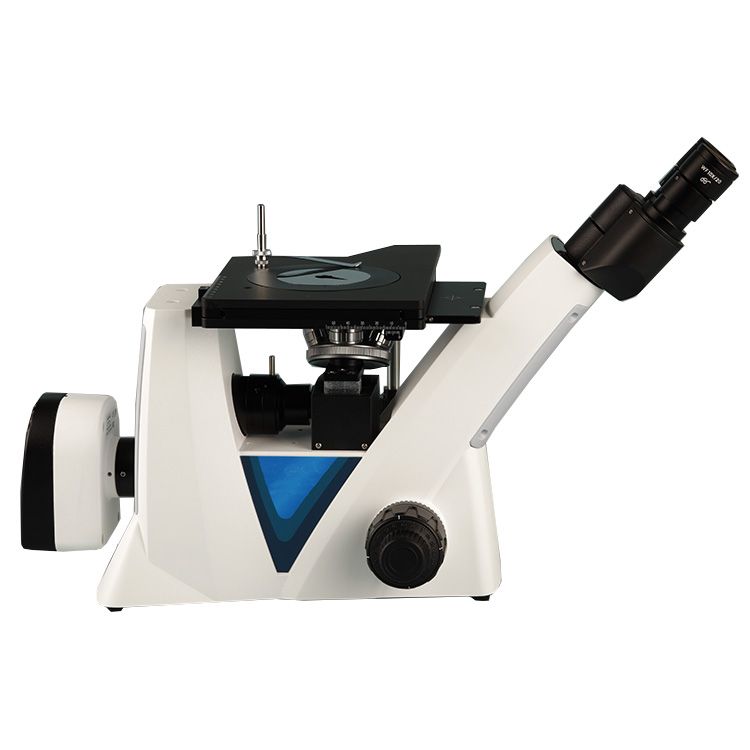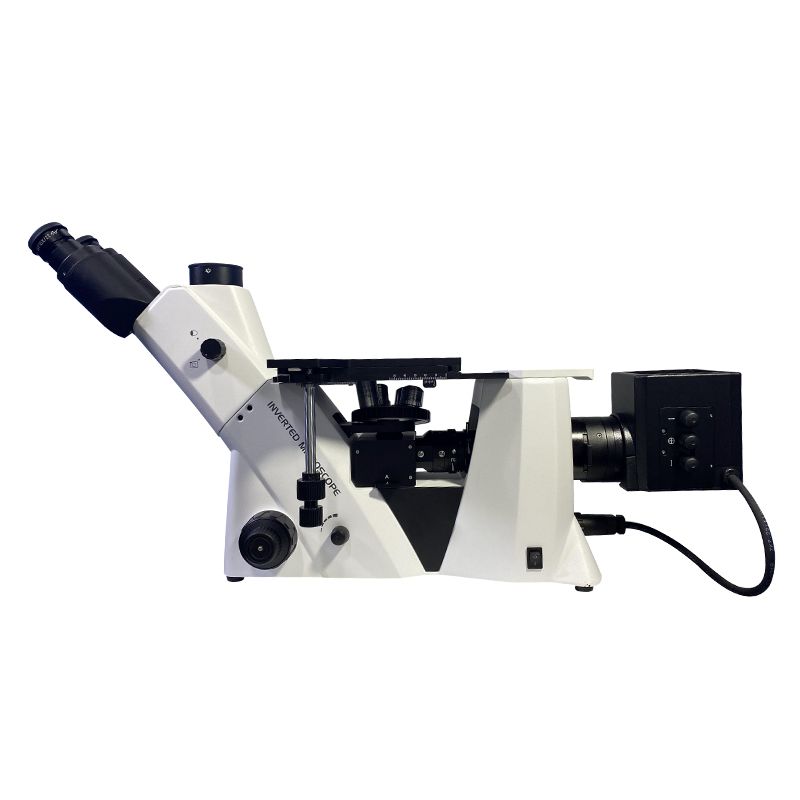A metallurgical microscope is a specialized instrument designed to examine the microstructure of opaque materials, primarily metals and alloys. Unlike biological microscopes that transmit light through specimens, metallurgical microscopes employ reflected light illumination to visualize the surface details of materials. This unique approach allows for in-depth analysis of material properties, defects, and inclusions, crucial for quality control, research, and development in various industries.
This article delves into the intricate components of a metallurgical microscope, explaining their functions and how they collectively contribute to the formation of high-resolution images. By understanding the anatomy of this powerful tool, you can optimize its performance and extract maximum value from your microscopic investigations.
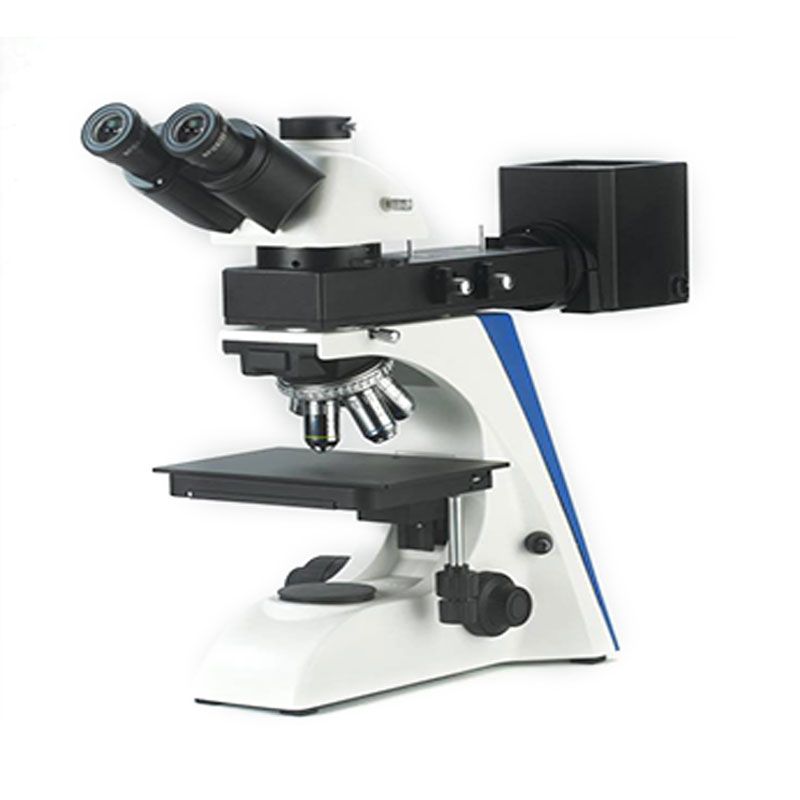
Metallurgical Microscope Parts and Functions
A metallurgical microscope is composed of several interconnected components working in harmony to produce high-resolution images of opaque materials. Here we delve into the key components of a metallurgical microscope, exploring the optical system, illumination system, mechanical components, and additional features that contribute to its overall performance.
1. The Optical System
The optical system is the heart of a metallurgical microscope, responsible for capturing and magnifying the image of the specimen. This system typically includes:
- Eyepieces (Oculars): through which the observer views the magnified image.
- Objective Lenses: which is the primary magnifying components.
- Tube Lens: which relays the image from the objective lens to the eyepiece.
Here are the functions of the main components:
| Key Components | Component Types | Functions |
| Eyepieces (Oculars) | 10x, 15x, 20x magnification | Magnify the image formed by the objective lens for viewing |
| Objective Lenses | 5x, 10x, 20x, 50x, 100x | Provide primary magnification and resolution of the specimen |
| Tube Lens | Infinity-corrected | Relays the image from the objective lens to the eyepiece, maintaining image clarity |

2. The Illumination System
A crucial aspect of metallurgical microscopy is the illumination system, which ensures that the sample is well-lit for clear observation. Key components include:
Light Source:
The light source in a metallurgical microscope is typically a halogen lamp, LED, or xenon arc lamp.
Halogen lamps offer good color rendition but generate heat, while LEDs are energy-efficient and have a long lifespan. Xenon arc lamps provide intense light for high-resolution imaging.
Condenser:
The condenser collects and focuses light onto the specimen.
It is adjustable to control the angle of light incidence, affecting image contrast and brightness.
Aperture Diaphragm:
The aperture diaphragm regulates the amount of light passing through the condenser, influencing image contrast and depth of field.
Field Diaphragm:
The field diaphragm controls the size of the illuminated area on the specimen, preventing stray light and improving image quality.
Filters:
Filters can be used to modify the color and intensity of light, enhancing specific image features or correcting color aberrations.
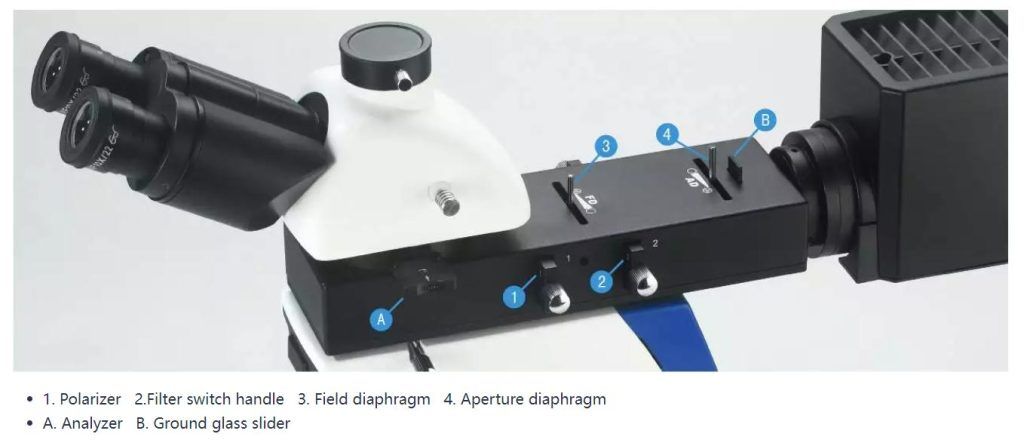
3. Mechanical Components
The mechanical components of a metallurgical microscope provide stability and precision in handling and focusing on samples. Important parts include:
Stage: The platform where the specimen is placed. It often includes mechanisms for fine adjustment in the X and Y directions, allowing for precise positioning.
Focus Adjustment Knobs: Coarse and fine adjustment knobs enable the user to bring the specimen into sharp focus. The coarse adjustment moves the stage significantly, while the fine adjustment makes small, precise movements.
Nosepiece: A rotating turret that holds the objective lenses, allowing the user to switch between different magnifications easily.
Base and Arm: The base provides support and stability, while the arm connects the base to the optical components. Together, they form the microscope’s structural backbone.
4. Additional Components (Optional)
Depending on the application, metallurgical microscopes may include several additional components:
Digital Imaging System: A digital camera can be attached to capture and record microscope images for analysis and documentation.
Polarizing Components: Polarizers and analyzers can be used to study the optical properties of materials, such as birefringence.
Specialized Objectives: Certain applications may require specialized objectives, such as long working distance objectives for rough surfaces or water immersion objectives for specific materials.
Comparison of Different Metallurgical Microscopes
Different types of metallurgical microscopes can have variations in their components based on their specific applications and design. Here are some key types of metallurgical microscopes and how their components might differ:
| Component | Upright Microscope | Inverted Microscope | Portable Microscope | Digital Microscope |
| Objective Lenses | Standard objectives, various magnifications | Optimized for working distances below the stage | Fewer magnifications, compact design | Standard objectives, various magnifications |
| Illumination System | Reflected light from above | Reflected light from below | LED lighting, battery-operated | LED or other advanced lighting systems, built-in cameras |
| Stage | Fixed stage, sample observed from above | Larger, more robust stage | Simplified or handheld operation | Standard or motorized stages, integrated with digital display |
| Eyepieces (Oculars) | Standard, various magnifications | Standard, various magnifications | May have limited or no eyepieces | May include or exclude eyepieces, focus on digital display |
| Tube Lens | Infinity-corrected | Infinity-corrected | Simplified design | Infinity-corrected or digital relay |
| Prism/Beam Splitter | Fixed or adjustable, directs light to eyepiece or camera | Fixed or adjustable, directs light to eyepiece or camera | Simplified design | Advanced designs for optimal image capture and processing |
| Additional Components | Optional cameras, filters, software for image analysis | Optional cameras, filters, software for image analysis | Basic features, portable design | Integrated cameras, advanced software for analysis and storage |
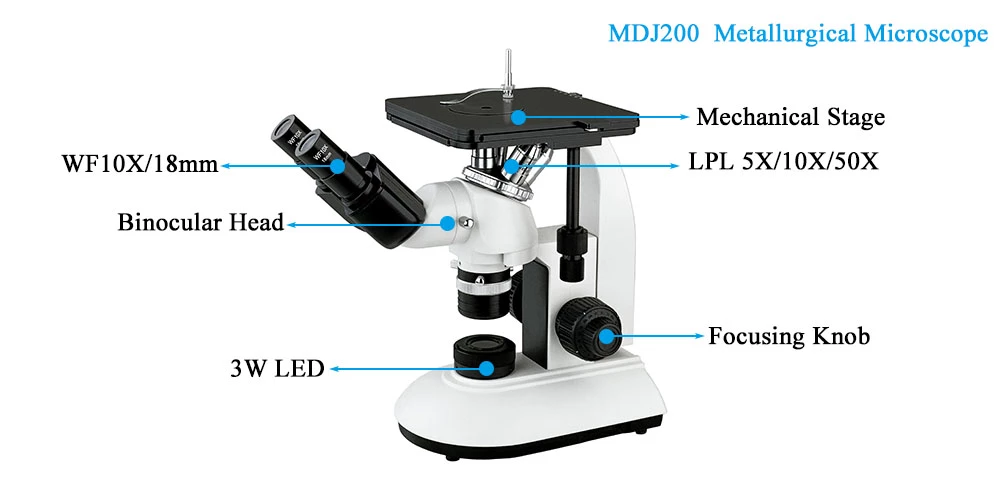
Find a Metallurgical Microscope supplier
When selecting a metallurgical microscope, it is essential to consider factors such as magnification range, resolution, illumination type, and budget. Here are the key considerations when choosing a supplier:
- Product range: Ensure the supplier offers microscopes that meet your specific requirements.
- Technical expertise: Look for a supplier with knowledgeable staff who can provide guidance and support.
- After-sales service: Consider the availability of spare parts, repairs, and maintenance services.
- Pricing and warranty: Compare prices and warranty terms from different suppliers.
By carefully evaluating these factors and conducting thorough research, you can find a reliable supplier and acquire a metallurgical microscope that delivers optimal performance for your applications. Scopelab is a professional supplier of laboratory equipments including different types of metallurgical microscope, they can provide you high quality products with reliable service. Please feel free to contact them when you need.
